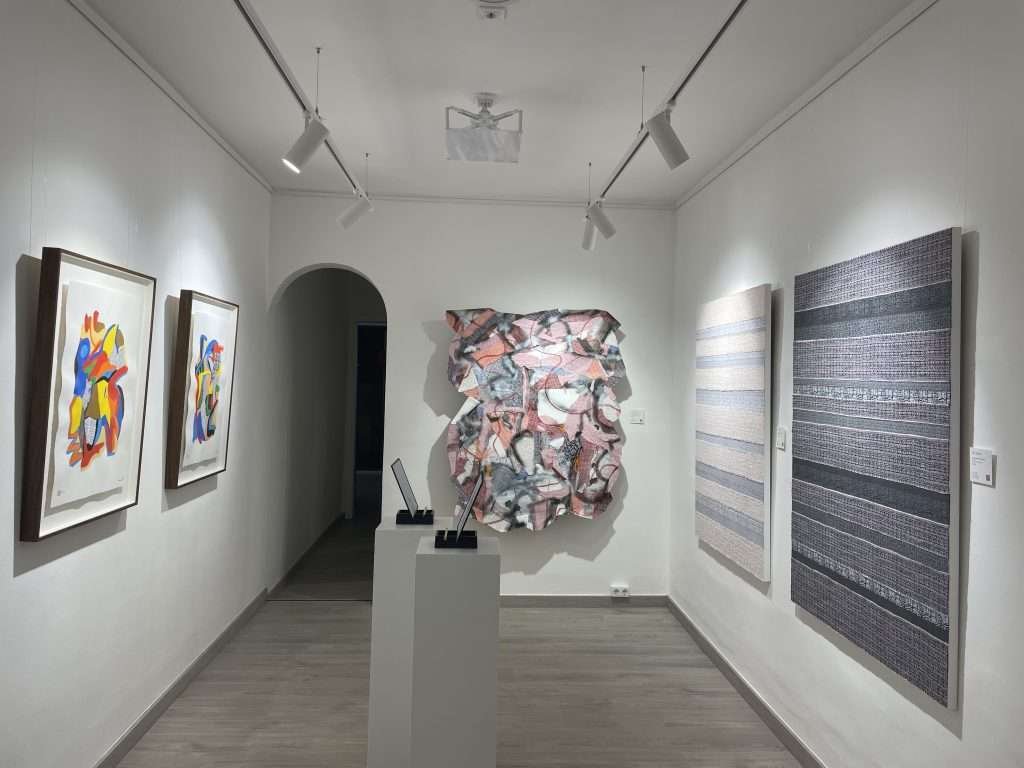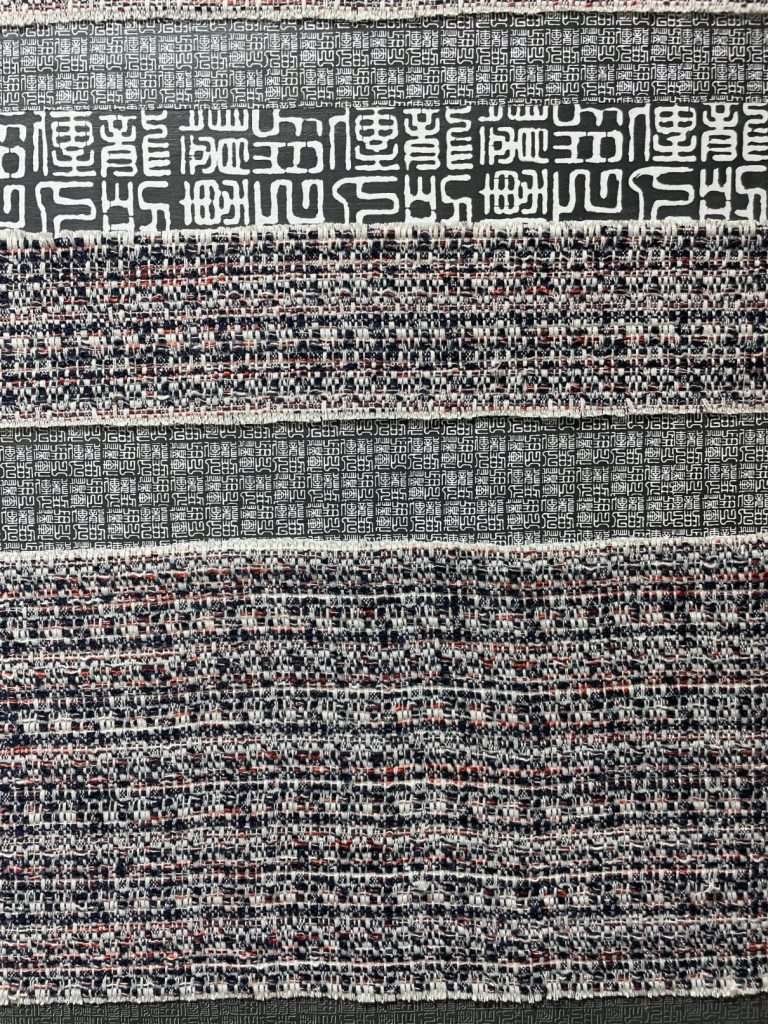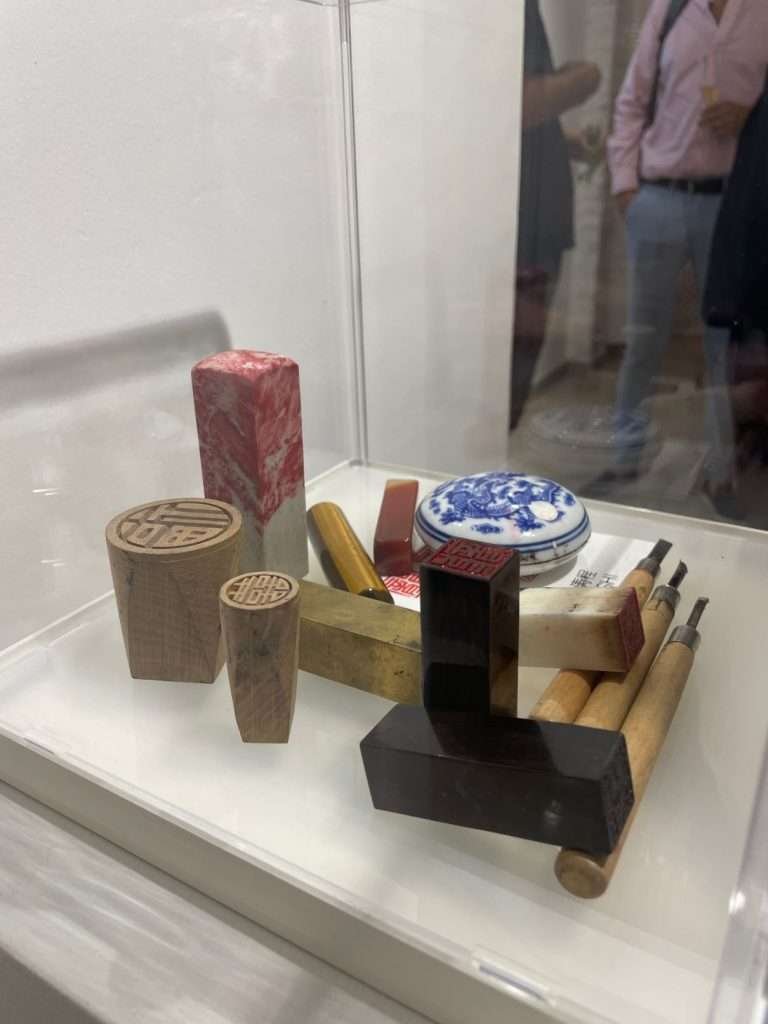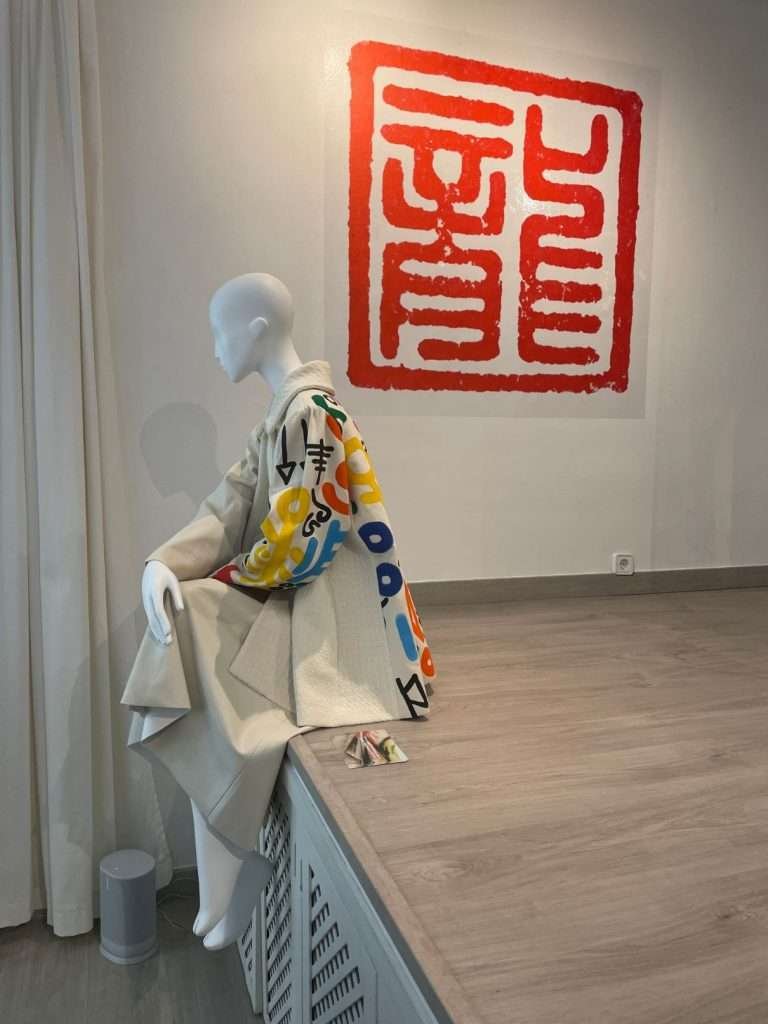New exhibition at NºHº Hºuse featuring Phil Akashi’s nomadic project, Legend of the Dragon.
The recently established art gallery and concept store, NoHo House, is tucked into Barcelona’s bustling Example district on Calle Corsega. As I walked through the front door, I was warmly greeted by Ulrika Talling-Smith and her welcoming staff, and feeling right at home, I was able to turn my focus onto the bold and colorful artwork hanging on the white walls.
Initially, I appreciated Phil Akashi’s work as I would a large mural—taking in the lively colors and patterns from afar. But as I got closer, I realized there was so much more to see—there were layers of material and meaning carefully stitched together.
After a short presentation from the artist explaining his how his travels in China influenced his creative process, I found myself wanting to view the art again–now, within their proper frame of reference.
I wish to create a spiritual alchemy where languages, materiality, mind and body are my tools to express and document our present time, and hopefully document the future.
– Phil Akashi
Phil Akashi was born in Belgium and as a nomad artist, started traveling in China in 2015. He was astounded at how the country’s 56 ethnic groups were in fact united and embraced diversity as an asset. He started using a wide range of media to explore and challenge themes of democracy, cultural identity, power and resistance in a series of street art and site-specific works to open up East/West dialogues with the local ethnic minorities.
Phil was called to a particular Chinese symbol, meaning “descendants of the dragon,” symbolizing Chinese unity and pride for the country. You can see this ancient symbol throughout this body of work, always made with a stamp seal.
“The stamp seal is a carved object, usually stone, first made in the 4th millennium BC, and probably earlier in Mesopotamia…Their impressions are used in lieu of signatures on personal documents, office paperwork, contracts, art, or any item requiring acknowledgment or authorship. Seals are typically made of stone, sometimes of metal, wood, bamboo, plastic, or ivory.” – philakashi.com
In recent years, Phil has created a wide range of artwork inspired by his experiences in China, integrating mixed media such as tweed, wool, woven fabrics, and hand-stitched cotton thread to pay tribute to China’s rich culture and history in arts and traditional crafts. He also experiments with languages from minority groups, such as the Dongba script, belonging to the Naxi ethnic minority.
Hearing Phil describe this body of work and the experiences, inspirations, and motivations behind it, made his work come alive! His passion is palpable. His words are authentic. It’s clear that this is someone with a true love of language, culture, diversity and art; with the ability to translate those passions onto a canvas that we all can appreciate and admire.
You can see Phil’s exhibition at Noho House until October 7th. You will also discover the unique collaboration in creative fashion design—featuring limited edition coats and bags designed by Agnes Ulrika incorporating artwork by Phil Akashi.
By Amelia Johannsen









Thanks for your interest in art & creativity on FrikiFish— a one-woman labor of love, providing free content and services to artists, art-lovers and creative projects in-and-around Barcelona. This project runs on caffeine and community love, please consider supporting with a donation or a cup of coffee. Thank you!